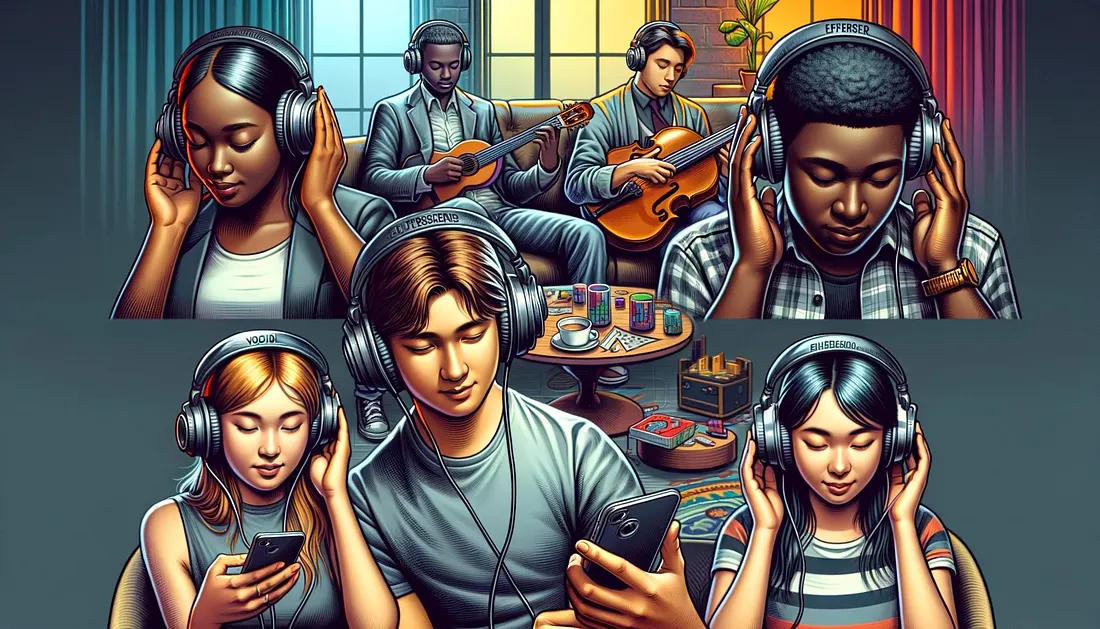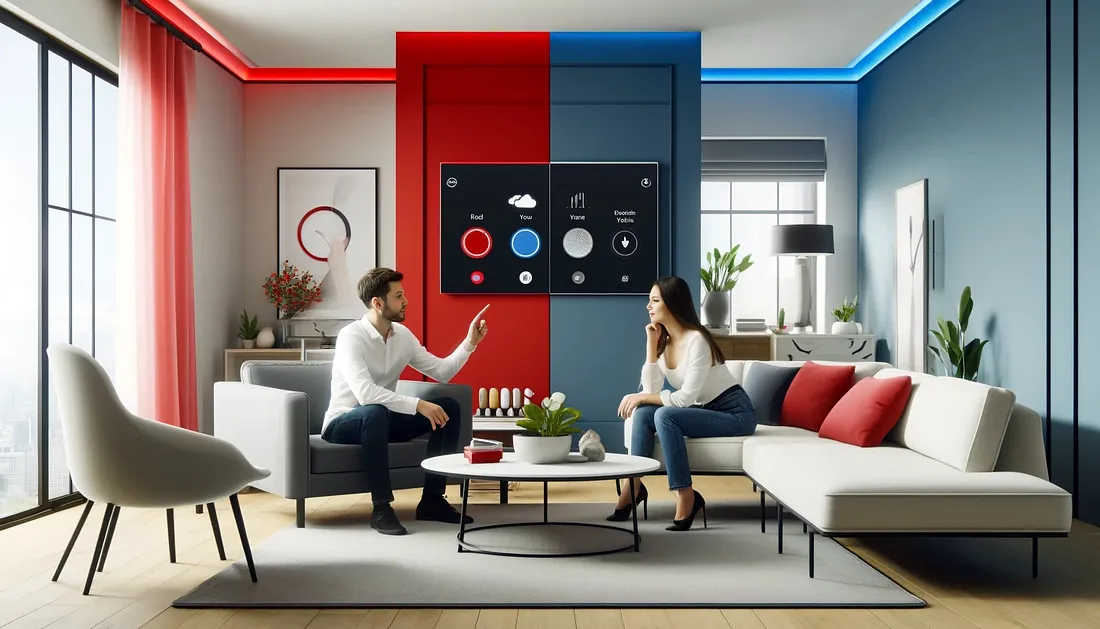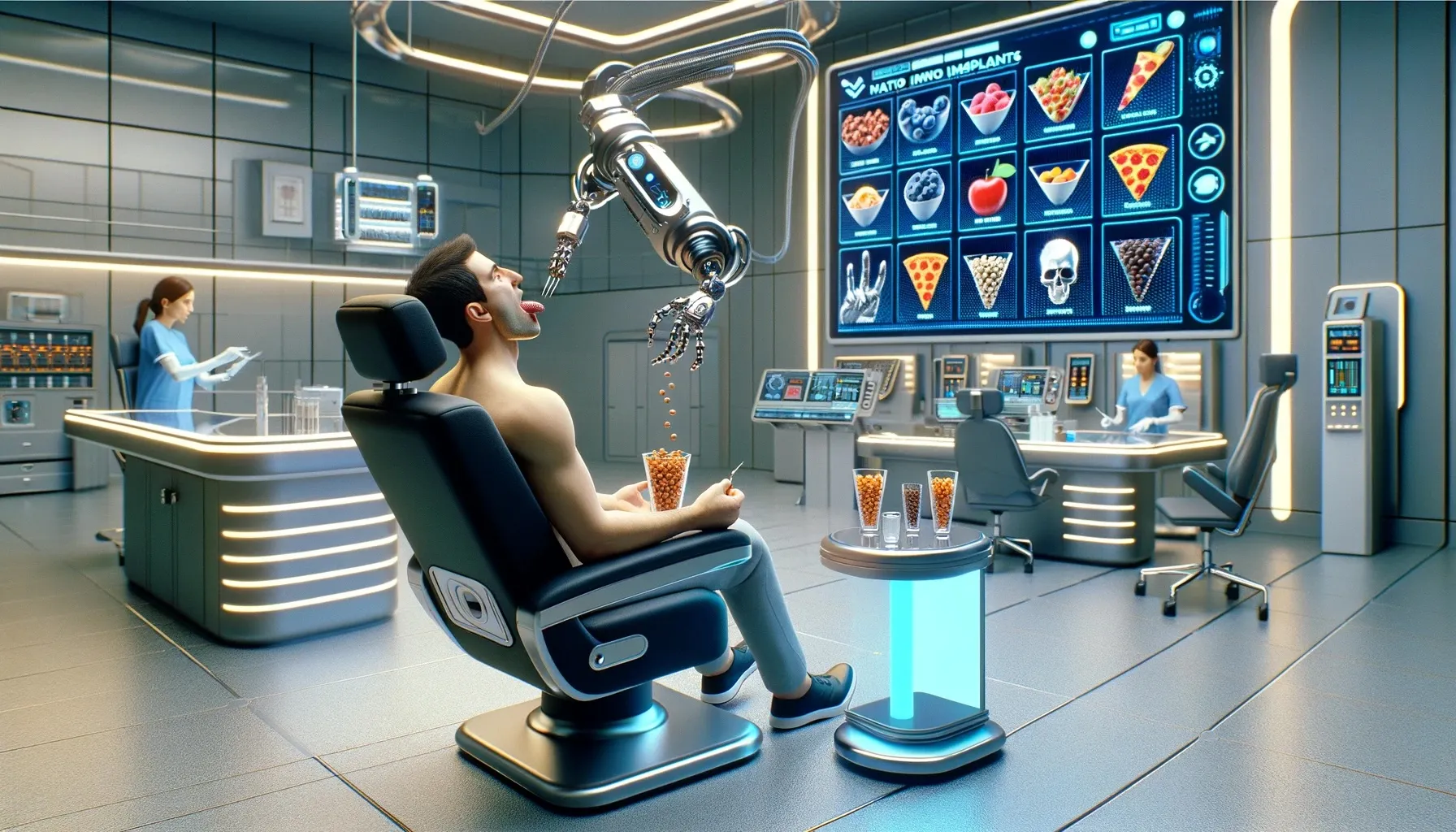“The future will be perfectly tailored — and maybe that’s what should worry us most.”
Chapter 1: Press Play, But Don’t Assume We’re Listening to the Same Song

I was on my fourth loop of the same Rihanna track, eyes closed, head resting on the windowpane as rain tapped the glass. But in my ears? Not a single drop of background percussion. My media player knew I hated that metallic snare that made songs feel like aluminum cans rolling down stairs. It had filtered it out.
The verse hit, but not the usual one. Today it was the mellow alternate version that hadn’t even dropped commercially — one that only surfaces when my wearable detects a certain heart rate range. I didn’t choose it. The system just… knew.
Then the visuals kicked in on my smart display. Not the music video most people remember. This one had Rihanna in that iconic black dress from “Umbrella,” remastered in 8K, lit with moody purples — my version of her. Always has been. Always will be.
My roommate walked by, paused. “You listening to ‘Lift Me Up’ again?”
I nodded.
He smirked. “Man, the way she belts in that second verse always gives me chills.”
I blinked. Second verse? That verse didn’t even play in my version.
Same song. Same artist. Same apartment.
Different reality.
💡 The Flip Side
Later that day, in a tense team meeting, my boss raised concerns about missed deadlines. But instead of his usual clipped tone that made my stomach tighten, I heard… calm. Constructive. Almost soothing.
It was only when I looked around the room that I realized — no one else seemed relaxed. Some looked defensive. One woman’s face had flushed red.
I checked my interface. Emotional Filter: ACTIVE.
My earbuds had softened his voice — literally. Adjusted pitch. Removed aggression. Translated urgency into calm professionalism.
It wasn’t what he said. It was what I needed to hear.
But suddenly I wondered:
If we’re all hearing our own versions of reality… are we still having the same conversation?
Chapter 2: The Red Wall That Saved Our Relationship

It started as a casual disagreement over paint swatches. I liked deep, earthy reds — something with character. She leaned toward cool blues that made the space feel breezy.
We stood in the living room holding up color cards like two wizards about to duel. Every conversation ended with “We’ll decide later,” which meant: We’ll never agree.
That was until we stumbled upon Mind-My-Paint, a smart paint that adapts based on who’s in the room. It sounded like a gimmick. But we were desperate.
Installation took two hours. By dinnertime, our living room could shift from scarlet to sapphire in seconds. Now, when I work from home, the walls hug me in red. When she meditates in the evenings, they melt into blue. When we both sit down with a glass of wine… the walls settle into a warm taupe we selected together — the neutral middle ground that wasn’t perfect, but was ours.
We joked that the paint had done more for our relationship than therapy.
And honestly? We weren’t wrong.
🪞 The Mirror We Didn’t Ask For
A few weeks later, we enabled the “Mood Memory” module — a harmless upgrade, we thought.
Photos and videos now appeared dynamically on the wall based on who was present. When I walked in, the gallery showed our first trip to Florence — the sun setting behind the Duomo, her hand in mine. A warm filter enhanced everything.
But one day, she mentioned seeing a completely different highlight reel — her graduation ceremony, her childhood dog, her mom’s last birthday. Moments I hadn’t been there for.
We laughed at first. But then something shifted.
She asked, “Do you ever see Florence anymore?”
I paused. “Not since last week.”
We were still living together. But we weren’t remembering together.
Chapter 3: The Ramen That Wasn’t There

I sat down at the kitchen table, the light from my food printer casting warm shadows across the room. It had just finished crafting what looked like a bowl of thick, rich ramen — supposedly a 1:1 replica of the legendary Rishiri Ramen Miraku.
I’d never been. The shop was buried deep on the northern tip of Japan, requiring a ferry ride, two trains, and a tiny regional flight just to get there. But I had ScrumpTongue implants — microscopic devices that manipulate taste perception in real time. Combined with my Global Gastronomy subscription, they claimed to recreate not just flavor, but texture, mouthfeel, even olfactory nuance.
I took a bite.
A wave of umami hit. Then that smoky richness. The noodles had bite. The broth felt aged, matured. I closed my eyes and imagined snow falling just outside a shop door in Hokkaido.
Across the table, my partner crunched into her bowl.
“Mine tastes like spicy curry udon,” she said casually.
We’d printed the same dish.
Same bowl. Different taste.
And that’s when I realized — there was no original anymore.
Chapter ∞: Designed For Me. Disconnected From Us.
Each day, the world becomes more you-shaped.
- Your walls reflect your memories.
- Your food echoes your palate.
- Your music aligns with your mood.
- Your friends speak in tones you can tolerate.
It’s beautiful. It’s efficient. It’s… frictionless.
But friction isn’t the enemy. Friction is how we learn.
It’s how we grow. It’s how we understand someone else’s world.
“Comfort is the cage that’s hardest to escape — because it’s made just for you.”
Final Reflection
Extreme personalization isn’t bad. It’s brilliant.
It gives us emotional safety, accessibility, equity, even joy.
But the question is no longer “What do you want to see?”
It’s:
What are you no longer seeing because of it?


